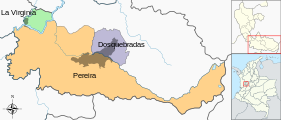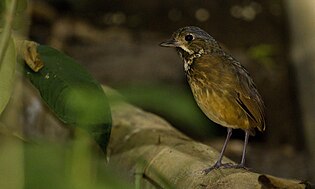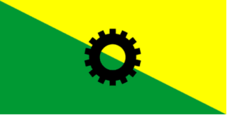Dosquebradas
Dosquebradas is a Colombian municipality belonging to the department of Risaralda, adjacent to the capital city of the department, Pereira (connected through the César Gaviria Trujillo Viaduct). Dosquebradas is the second city in the department at the population level, it is part of the Central Western Metropolitan Area (AMCO) and is one of the main industrial centers of the Coffee Region.
Dosquebradas derives its name from 2 streams that cross the Municipality, which are Santa Teresita and Las Garzas, which is why large streams and streams originate in the mountains and pass throughout the municipality. It has 2 townships, Las Marcadas and Serranía del Alto del Nudo, both with tourist and ecological corridors that present a good offer of tourism and gastronomy at the Regional and National level.
Public transportation and the Megabus mass transportation of the city of Pereira also reach the municipality of Dosquebradas.
Limits
North: Marseille, Santa Rosa de Cabal
South: Pereira
East: Santa Rosa de Cabal
West: Pereira
History
Beginnings
The territory that the municipality of Dosquebradas occupies today was inhabited since before the Colony by the Quimbaya nation.
This territory was discovered by Captain Jorge Robledo, when he entered said province upon his return from Arma in the year 1540.
He went in with some soldiers from Irra to explore the highlands that lay to the southwest. The Cananao chieftain, ruler of Irra, fearful of the proximity of Christians or Spaniards in his territory, went out to meet him and, as if to seek friendship and give him a good welcome, gave him a large gold vessel in the shape of a cap, which came, according to statements from the chief of a tribe whose lords “served themselves with gold and had pots and all services in gold” This was the first time that Robledo learned of the existence of the Quimbayas.
These statements aroused the interest of the Spanish in this territory. It should be noted that the Quimbaya empire, which populated part of what is now Valle del Cauca, Risaralda, part of Caldas and all of Quindío, was made up of about 80,000 aborigines, with a well-organized government and an ancient culture, contrary to the name of savages that they received from the conquerors, to justify their elimination, until they almost completely exterminated them. In what is politically today Dosquebradas, there initially lived a family of Quimbayas called Putamaes, hunters, warlike and only friends of their neighbors for the exchanges established by the Quimbayas.
These ancestors lived on the slopes and hills that surround the Dosquebradas valley, which was rich in water and wild vegetation, typical of the climate.
If the Chibcha civilization is called that of corn, that of the Quimbayas can be called that of guadua, and that of the Putamaes in particular, that of gold.
The inhabitants of Dosquebradas on their hills observed the plain planted with guadua in the middle of the endless lagoons of their Valley, lagoons caused by the continuous overflow of its multiple ravines and streams caused by its abundant hydrographic wealth and its high river precipitation. which in turn caused the natives to seek refuge on the slopes and hills that border it.
Industrialization
Already in 1948, the first hints of industrialization were visible and the construction of the La Rosa grocery factory building began, by the North American company Grace Line. Two years later, the Omnes Cloths factory. property of the firm Compañía de Tejidos de lana Omnes S.A. from the world-famous cloth production company P. Cía. Toutlemonde, settles in Dosquebradas and begins its assembly.
The Development Board of the Dosquebradas District, which at that time looked after the development of the region, exempted companies that wished to establish themselves in Dosquebradas from taxes for a reasonable period of time. Immediately, factories and companies began to emerge en masse, given its comfort and strategic location between the golden triangle: Cali, Medellín, Bogotá.
The township of Dosquebradas depended geographically and politically on the municipality of Santa Rosa de Cabal, which in turn depended at that time on the Department of Caldas.
Later it became independent from Santa Rosa de Cabal in 1972, given its extreme proximity to the neighboring city of Pereira, it became a satellite city of this capital, a relationship that prevails to this day, and which has given it a more commercial character..
Tragedy of 2011
On December 23, 2011, in the sector known as La Romelia, in the Villa Carola neighborhood, in commune 10 of Dosquebradas, a tragedy occurred due to the explosion of a pipeline. According to preliminary data, at least 13 people were killed and more than 80 were injured. The cause of the explosion is a possible theft of gasoline. The then mayor of Dosquebradas, Luz Ensueño Betancur, pointed out that more than 400 people were affected by this tragedy. Several injured people had second and third degree burns and were treated in healthcare centers in the municipality and Pereira. According to the Dosquebradas Mayor's Office, the injured were treated at the Santa Mónica, San Jorge, Los Rosales hospitals, the Comfamiliar Clinic and other medical centers.
On the day of the tragedy, Ecopetrol, which is the administrator and operator of the country's pipelines, responded to the situation and the Minister of Mines and Energy stated:
[...] that the flow of fuel through the tube was suspended and that a commission of directors and technicians of Ecopetrol attend the emergence.” [...] the first investigations indicate that the explosion would be for the strong winter that suffers from that sector of the country. Dismissing the alleged gas theft. The heavy rains, according to Cárdenas, caused a movement of soil that tensioned the pipe by breaking it in such a way that this unfortunate event occurred. The fuel began to filter through the mouth of the Aguazul ravine. His expansion through the current led him to a hot spot, which was what eventually produced the strong explosion.[chuckles]required]
The Comptroller General of Colombia published a study indicating that the tragedy could also have been caused by lack of maintenance on the pipeline networks.
Hydrography
The Municipality of Dosquebradas has had a great advantage of streams and rivers, since they are born in the high parts of the eastern and western side, the main basin of the municipality is the Dosquebradas stream, which is formed by the union of the Manizales and Aguazul streams flowing into the Otún River. The hydrography network is made up of springs, springs and streams in the upper parts of the municipality and several community aqueducts, both rural and urban, depend on it, supplying more than 100,000 inhabitants.[citation required]
The main hydrographic networks of the municipality are made up of the following streams:[citation required]

- Otún River
- Two broken
- The Viper
- Frailes
- Gutiérrez
- The cold
- Aguazul
- Manizales
- The Amoladora
- Tominejo
- The Soledad
- Molinos
- San José
- The Crystalline
Climate
The climate of Dosquebradas is a very variable and pleasant climate, its altitude is between 1450 and 2150 m s. n. m., but its urban area has an average height of 1520 m s. n. m., and its temperature ranges between 18 °C and 30 °C, it is frequented by rain, especially in the afternoon hours, because it is a city at the foot of the mountain range. The mornings are cool, with warm afternoons and cold nights.
Political-Administrative Division
In addition to its Municipal Headquarters. Dosquebradas has the following populated centers under its jurisdiction:
- Aguazul
- High of the Bull
- Buenavista
- Comuneros
- The chest
- The Stanch
- The Divisa, high.
- The Emerald
- The Playita
- The Union
- Orange
- Santana Baja
- Villa Carlota
Central Western Metropolitan Area

The Metropolitan Area of Central West is a Political-Administrative entity that is located in the department of Risaralda. Located in the valley of the Otún River (346 km long and the most important in the basin and the main source of water supply for Pereira and part of Dosquebradas). Its main nucleus is the City of Pereira, and its satellite municipalities are Dosquebradas and La Virginia; It has 709,338 inhabitants. It was created by Ordinance No. 20 of 1981 by the Risaralda Assembly.
Ordinance 020 was modified in 1991 by Ordinance No. 14 of March 26, 1991, to establish the attached municipalities: Pereira, Dosquebradas initially and later the municipality of La Virginia. It is the second most important municipality in the department and the fourth in the Coffee Region with a population of 202,789 inhabitants.
Tourism

Dosquebradas is part of the Coffee Cultural Landscape (PCC) declared by UNESCO in 2011 and where coffee and banana crops are developed on hillside and mountain terrain that a large part of the Municipality is formed, another of the components that this has is the Guadua, symbol of the Coffee Axis and where we can see and admire a large number of the Veredas and urban areas. All these mentioned characteristics have served to strengthen Dosquebradas in the tourism and commercial sector and thus show itself to the world with its sites of interest, pilgrimage, history and gastronomy in which it has places of prayer such as the Sanctuary of the Virgin of Purity located in the Alto del Oso sector and from there you can visit El Camino de los Venados via where you can reach the Sanctuary, the Chapel Church, which is located in the neighborhood that bears the same name, is a Site Historic because it is the First Church Built in the Municipality in the 1940s and of which there are records of photos and old archives. Another of the places of Tourism and History are the Piedras Marcadas located in the Alto del Toro village where We can find Petroglyphs on the rocks around the ravine, vestiges of the Quimbaya tribe culture that lived and was seated in the Municipality before the arrival of the Spanish to America and further on we find the La Cristalina ravine. Special site where its waters carry are As their name indicates, they are Crystalline and Pure.
Another very important site is the Argentina Waterfall in the Serranía del Alto del Nudo where the Mirador del (Alto del Nudo) project is being developed, led by the Government of Risaralda, which has the intention of receiving tourists from Colombia. and from other countries in this corridor there is the Bonita Farm butterfly garden, the Minas del Socorro Ermitas and in the Urban part we can visit the Pradera Lake, a recreation site for Families on the Weekends that has ecological trails and the lake where there are ducks, geese and a variety of flora and fauna of the region.
Places of interest
- Parque Municipal Lago de la Pradera
- Stones Marked with Petroglyphs in the High Vereda of Toro
- Regional Natural Park La Marcada
- The Crystalline
- Sanctuary of the Virgin of Purity in the High of the Bear
- Camino de los Venados
- Parque Municipal Lago de la Pradera

Grallaria guatimalensis is a bird that houses Bonita Farm, place of bird and butterflies admiration - Chapel Church in the Barrios de la Capilla and Santa Teresita
- Parque Regional Natural Serranía del Alto del Nudo
- Alto del Nudo viewer Encouraged by the Department (In Construction)
- Cascada del Chaquiro
- The Hermitage of Las Minas del Socorro
- Butterfly Bonita Farm
- Older Recreative Center Club
- Gastronomic Corridor of the Prairie
- Helicoidal Bridge
Festivities
- Feasts of Progress: This festival takes place in the last days of November and the first days of December, where the anniversary of political-administrative life of the municipality of Dosquebradas is commemorated. On December 6, the foundation and birth of Dosquebradas as a municipality of Risaralda with Parada Militar and parades in the main avenues of the city are remembered.[chuckles]required]
- FESTICINE International Film Festival: Organized by the Charlot Foundation every year in honor of the arts of film, drama and the memory of the actor Charles Chaplin. Since 2006, it has been held with international guests. It is held in October in schools, schools, parks and foundations that support the culture of the municipality.[chuckles]required]
- Eje Moda: Made by the Chamber of Commerce of Dosquebradas. It seeks to promote the industry, fashion, innovation, creativity and entrepreneurship of the region. It takes place in the third week of May at EXPOFUTURO.[chuckles]required]
Transport and roads

The Municipality of Dosquebradas is one of the Municipalities that belongs to the Metropolitan Area of the Center-West (Amco) made up of the municipalities of Pereira, Dosquebradas and La Virginia which enjoys public transportation to different sectors of the city. It has an operating system for the movement of passengers from Dosquebradas to Pereira and the opposite direction: it is the Megabús, public and private transportation for good comfort and mobility in the urban and rural area of Dosquebradas. These are the public transportation systems that operate in the Municipality.
Megabus
In 2006, the mass transportation system was inaugurated (the third in the country, and the only one in the intermediate cities), composed of articulated rapid transit buses and feeders, called Megabús, which serves the municipalities of Pereira, Dosquebradas and La Virginia, moves more than 200,000 passengers daily, it is also planning to mobilize the inhabitants of Santa Rosa de Cabal and the municipality of Cartago, conditional on them deciding to be part of the Central Western Metropolitan Area (AMCO).
Several yellow Feeders operate that transport passengers from different sectors of the city. It has a green Articulated interchange in the El Progreso Shopping Center, with transfer stations on Simón Bolívar Avenue. This system over time has allowed us to reach more than 60% of the city from 2016 to today.
Collective Public Transport
The city also has TPC, the conventional Collective Public Transport System, regulated by the Metropolitan Area of Central West, and which provides its service to this same geographical organization (Pereira, Dosquebradas and La Virginia). This system has more than 20 routes that run through each neighborhood of the cities in the area. Before the arrival of Megabús, it mobilized the majority of the population. However, year after year its use has decreased and that of the Integrated Transportation System has increased. Mass Transportation, generating the elimination of certain routes and the scrapping of hundreds of polluting buses. Currently, the seven companies of this transportation system (Súperbuses, Urbanos Pereira, San Fernando, Urbanos Cañarte, Servilujo, Transperla and Líneas Pereiranas) work hand in hand with Megabús.
Intermunicipal and interdepartmental transportation
Dosquebradas has good Intermunicipal Transportation, that is, it has buses that travel to other Municipalities of Risaralda such as Santa Rosa de Cabal with companies such as Mosarcoop, Líneas Pereiranas, Expreso Alcalá, Cooprisar among others and Interdepartmental buses to other destinations such as Manizales, Medellín, Chinchiná and the Caribbean Coast where this is an obligatory step for these destinations of National Origin
Avenues and roads

The city has an access network of Roads and Avenues through the departments of Caldas, Valle and Quindio, with interdepartmental roads such as the so-called "Autopista del Café" and the La Romelia-El Pollo Highway which communicates with the Avenues that the Municipality of Dosquebradas has. Below are some avenues that the City has:
- Viaduct César Gaviria Trujillo
- Simón Bolívar
- The Railroad
- The Molinos
- Japan
- The Circumvalation or Vial Ring of Frailes-La Pradera
- Las Torres-Don Bosco Avenue
- Turin-La Popa Variant in the Badea Sector
- Road Intercession of La Popa-San Judas
- El Bohío-Los Campestres A,B,C
Education
The Municipality of Dosquebradas has a group of schools that seek to educate the future citizens of the region, training that not only immerses itself in the academic but also in the human, among the main institutions are:
Official and Private Schools
- Educational institution Agustín Nieto Caballero
- Colegio Institución Educativa Juan Manuel González
- Colegio Institución Educativa Nueva Granada
- Educational institution Santa Isabel
- Colegio Institución Educativa María Auxiliadora Salesianas
- Educational institution Pablo Sexto
- Educational institution Santa Juana de Lestonnac
- Educational institution Santa Sofia
- Colegio Institución Educativa Popular Diocesano
- Educational institution Manuel Elkin Patarroyo
- Education Institution Our Lady of Guadalupe
- Educational institution Christ the King
- Educational institution Casa Nazareth
- Institución Educativa Bosques de la Acuarela
- Institución Educativa Empresarial
- Educational institution Fabio Vásquez Botero
- Educational institution Bombay
- Colegio Salesiano San Juan Bosco
- Instituto Tecnológico Dosquebradas
- Educational institution Eduardo Correa Uribe
- Colegio Rodolfo Llinas
Universities
- National Open University and A Distance UNAD CEAD Aje Cafetero
- ESAP (Public Service College)
Symbols
Flag

The flag was made official by the Municipal Council through agreement No. 5 of April 1983. It has 2 colors, yellow and green, biased with a black 14-tooth pinion in the center:
- The yellow on the top right represents the wealth of the soils of the Municipality and the history of the Quimbaya tribe, a tribe that was known for gold and which was settled in these lands.
- The green on the lower left represents the hope of its people.
- The pineone made up of 14 teeth, shaped in the center, symbolizes the Industrial Emporio of the factories that are in the urban area.
Shield

The coat of arms was created by Agreement 015 of November 18, 1985 by the Municipal Council, and is made up of four sections or signs:
- The first one is grey, in the middle there are two rivers or cracks that give representation to the name of our Municipality.
- The second is green and has a poporo, as this is a work of Aboriginal art of the Quimbayas, former inhabitants of the current territory of Dosquebradas.
- The third is yellow and in the middle of it is represented a 14-tone pineapple, symbol of its promising industry.
- The fourth and last is also grey and has the letters D and Q interlaced red with black edges. Its surroundings are framed by the red and blue colors.
Hymn
Lyrics and Music: Aníbal Garcés
CHORUS:
Oh! Dosquebradas bright star
You are proud of the region
With your women and your strength
Orlas the sky of the heart
I
They came to your humid lands
New people of Great Promise
And these Humble Lives Forged
An emporium for the Region
on Every Side of Your Heights
Raise the Arm of the Labrador
In you Men Find Shelter
Peace and Justice, deliveries of Love
CHORUS:
II
Beautiful Valley of the Quimbayas
Where Progress is a Shine
After struggles and hopes
That bore fruit from Sun to Sun
You are my Homeland by RISARALDA
My Dosquebradas gift Natural
For you my Spirit Always Sings
Industrial Crucible Ancestor Ethnicity
CHORUS:
Culture
Dosquebradas is a birthplace of artists from the Region. There is a great cultural and artistic diversity (Theater, Dance, Writers, Painting, Sculpture, Origami, and currently an unusual development in Cinema and Audiovisual).
Twinnings
Contenido relacionado
Miranda de Azán
Martin de Yeltes
Vermont